Haunting ribbons of green and purple dance across the night sky, shifting and shimmering like ethereal curtains blown by cosmic winds. The aurora borealis—or northern lights—has captivated humanity for millennia, inspiring myths, legends, and a profound sense of wonder. But what exactly creates this breathtaking celestial ballet that draws thousands of travelers to the Arctic Circle each year?
Behind the stunning display lies a complex interplay of solar physics, planetary magnetism, and atmospheric chemistry that begins 93 million miles away on our sun and culminates in one of nature’s most spectacular visual phenomena.
The Solar Origins: A Closer Look at Our Tempestuous Star

It all starts with a turbulent explosion. The sun, far from being a placid ball of gas, is a roiling, churning cauldron of superheated plasma constantly undergoing violent magnetic transformations. When magnetic field lines on the sun’s surface twist and snap—like cosmic rubber bands stretched beyond their breaking point—they release tremendous bursts of energy and charged particles. These eruptions, called solar flares and coronal mass ejections (CMEs), blast billions of tons of electrified plasma into space at speeds reaching a million miles per hour.
The sun’s outer layer, the corona, reaches temperatures of over 1 million degrees Celsius—paradoxically much hotter than the surface at “only” 5,500 degrees. This temperature inversion, still not fully understood by scientists, creates the perfect conditions for these explosive events. During particularly active periods, the sun may produce several CMEs per day, each containing enough energy to power the United States for a million years.
The journey begins innocuously enough. These charged particles—mainly electrons and protons—stream outward in all directions, forming what scientists call the solar wind. Most drift harmlessly through the void, destined never to encounter a planetary body. But some, by chance or cosmic design, find themselves on a collision course with Earth.
Our planet, however, is not defenseless against this onslaught.
Earth’s Magnetic Shield: The Invisible Protector
Earth possesses a powerful magnetic field—a vast, invisible bubble of protection generated by the churning liquid iron in our planet’s outer core. This magnetosphere, extending tens of thousands of miles into space, acts as our first line of defense against the sun’s radioactive bombardment. Without it, Earth’s atmosphere would be slowly stripped away, much as happened to Mars billions of years ago when its magnetic dynamo faltered and died.
The mechanism behind Earth’s magnetic field is fascinating in its complexity. Deep within our planet, the solid inner core heats the liquid outer core to temperatures comparable to the sun’s surface. This heat drives convection currents in the electrically conductive iron-nickel alloy, creating what scientists call a “geodynamo.” The spinning motion of Earth adds another dimension, helping generate a dipolar magnetic field with strength varying between 25 and 65 microteslas at the surface—hundreds of times stronger than the feeble magnetism needed to stick a photo to your refrigerator, yet minuscule compared to an MRI machine’s 1.5-tesla field.
When the solar wind encounters our magnetosphere, something remarkable happens. Rather than penetrating straight through, the charged particles are deflected, flowing around Earth like water around a stone in a stream. This interaction compresses the magnetosphere on the sun-facing side and stretches it into a long tail—the magnetotail—on the night side, creating a teardrop-shaped protective cocoon that extends some 630,000 kilometers (390,000 miles) into space.
But the shield isn’t perfect. Near the poles, the magnetic field lines curve inward, creating funnels where solar particles can sneak through. These weak points—called cusps—serve as doorways through which energetic particles from the sun can access our upper atmosphere.
The Atmospheric Dance: Where Particles Meet Molecules
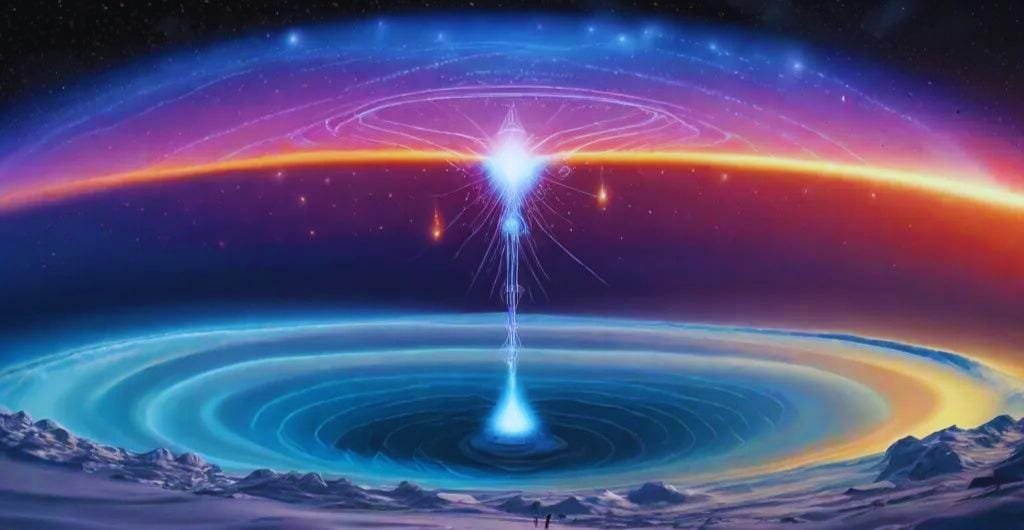
And here’s where the magic truly begins. As these energetic particles spiral along magnetic field lines toward the polar regions, they plunge into Earth’s upper atmosphere—typically at altitudes between 60 and 300 miles above the surface. This rarefied region, where air molecules float far apart from one another, becomes the stage for our auroral display.
The incoming particles—primarily electrons—collide with atmospheric gases. These collisions transfer energy to the gas molecules, temporarily exciting their electrons to higher energy states. When these excited electrons eventually fall back to their normal states, they release this excess energy as photons—particles of light. The process is remarkably similar to how neon signs work, with electricity exciting gas atoms to produce their characteristic glow.
But what creates the mesmerizing colors? That depends entirely on which atmospheric gases the solar particles strike.
Oxygen, when hit at high altitudes (around 200 miles up), produces the most common auroral color: a vivid, ghostly green. This specific wavelength—557.7 nanometers—dominates most auroral displays and is caused by atomic oxygen. At lower altitudes, oxygen collisions can generate rare, blood-red auroras with a wavelength of 630.0 nanometers. Nitrogen, meanwhile, contributes blue and purple hues, with molecular nitrogen producing blue and ionic nitrogen creating purple. When these colors blend and overlap, they create the full spectral palette of auroral displays—from rippling green curtains with purple edges to rare all-red “blood auroras” that once terrified ancient civilizations as omens of war.
The shapes and movements of auroras are equally complex and varied. The simplest form is the diffuse, stable arc—a gentle band of light stretching across the sky. As energy increases, these arcs can evolve into more dynamic “curtains” that ripple and fold. During the most intense geomagnetic storms, auroras may form spectacular “coronas” that appear to radiate from directly overhead, creating an immersive dome of light that seems to surround the observer.
Timing and Prediction: The Sun’s Rhythmic Influence
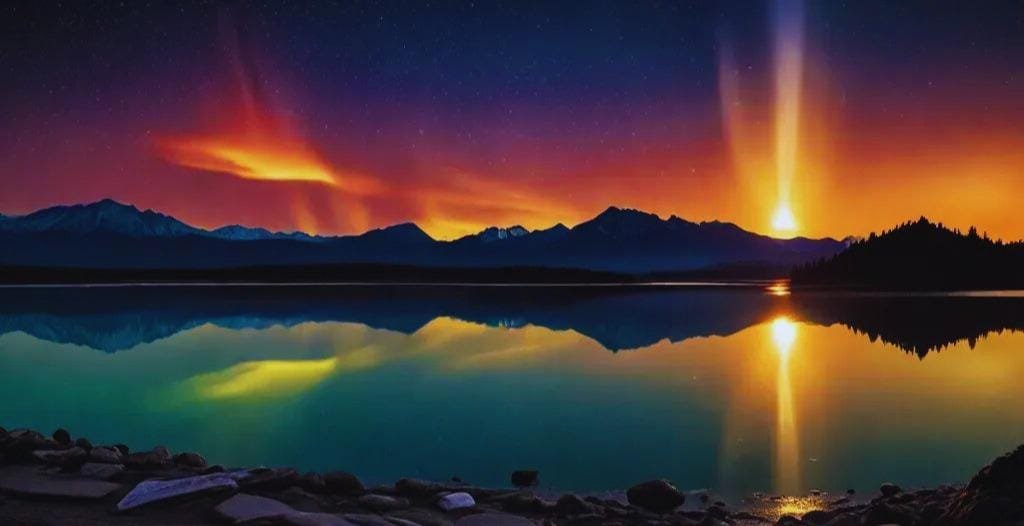
The sun follows an 11-year cycle of activity, with periods of relative calm punctuated by years of intense magnetic storms and solar eruptions. During solar maximum—the peak of this cycle—auroras become more frequent and can be visible at lower latitudes, sometimes appearing as far south as Texas or Florida in the United States.
This solar cycle was first noticed by German amateur astronomer Heinrich Schwabe in 1843, after 17 years of daily sunspot observations. We now understand that this cyclical behavior is driven by the sun’s differential rotation—it spins faster at the equator than at the poles. This differential rotation gradually twists the sun’s magnetic field until it becomes unstable, leading to increased sunspot activity and solar flares.
Space weather forecasters at organizations like NOAA’s Space Weather Prediction Center constantly monitor the sun for signs of eruptions that might trigger auroral displays. Using satellites positioned between Earth and sun, they can provide warnings 15-60 minutes before particles reach our planet—just enough time for aurora chasers to grab their cameras and head outside.
The most important of these sentinels is the Advanced Composition Explorer (ACE) satellite, positioned at the L1 Lagrange point—a gravitationally stable location approximately 1.5 million kilometers (932,000 miles) from Earth. From this vantage point, ACE detects incoming solar particles well before they reach our magnetosphere, allowing forecasters to estimate both the timing and intensity of potential auroral displays.
Recent advancements in machine learning and artificial intelligence have significantly improved these predictions. Modern algorithms can analyze subtle patterns in the sun’s magnetic field structure to forecast eruptions days in advance with increasing accuracy. For aurora enthusiasts, these improvements mean more reliable forecasts and fewer nights spent watching cloudy skies when no display occurs.
Geographic Sweet Spots: Where to Witness the Spectacle
The auroral oval—the ring-shaped region where auroras are most commonly visible—typically hovers around geomagnetic latitudes of 65-70 degrees. This places prime viewing locations in places like Alaska, northern Canada, Iceland, northern Scandinavia, and Siberia in the Northern Hemisphere, or Antarctica and the southern tips of Australia, New Zealand, and South America in the Southern Hemisphere (where the phenomenon is called aurora australis, or southern lights).
The geomagnetic poles—which determine the position of these auroral ovals—don’t align perfectly with the geographic poles. The North Magnetic Pole is currently located in the Arctic Ocean north of Canada, while the South Magnetic Pole lies off the coast of Antarctica south of Australia. Moreover, these magnetic poles aren’t stationary; they wander over time. The North Magnetic Pole, in particular, has accelerated its movement in recent decades, shifting from Canada toward Siberia at speeds up to 55 kilometers per year.
During particularly powerful geomagnetic storms, this oval expands equatorward, sometimes dramatically. The largest recorded geomagnetic storm in history—the Carrington Event of 1859—produced auroras visible near the equator and so bright that people could read newspapers by their light at midnight. Gold miners in the Rocky Mountains awoke believing it was morning, while telegraph operators reported being able to send messages even after disconnecting their batteries, as the geomagnetically induced currents in the wires provided sufficient power.
Scientists classify geomagnetic storms on the Kp index, a scale from 0 to 9 that measures disturbances in Earth’s magnetic field. During a modest Kp-5 storm, auroras might be visible across Canada and the northern United States. A severe Kp-8 or Kp-9 storm could bring auroras as far south as Mexico or Cuba—though such extreme events occur only a few times per solar cycle.
Beyond Earth: Auroras Across the Solar System
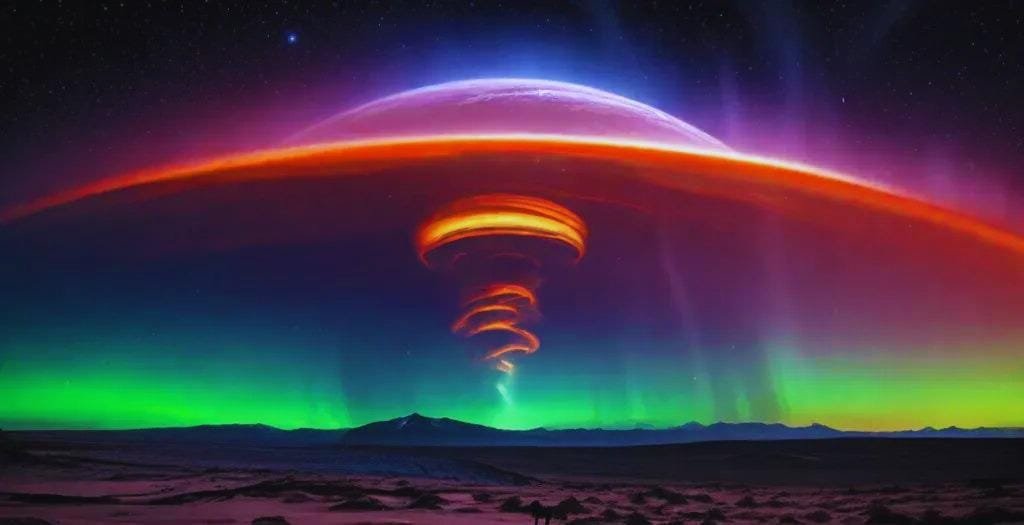
Earth isn’t the only planet graced with auroras. Jupiter’s massive magnetosphere and interaction with its volcanic moon Io creates permanent, powerful auroras bigger than the entire Earth. These Jovian auroras don’t just occur in visible light; they’re particularly intense in the ultraviolet and X-ray portions of the spectrum, revealing the tremendous energies involved.
Io, constantly tugged by Jupiter’s immense gravitational field, is the most volcanically active body in our solar system. Its eruptions eject sulfur dioxide into space, which becomes ionized and forms a plasma torus around Jupiter. This plasma interacts with Jupiter’s rapidly rotating magnetic field (the gas giant completes a rotation in just under 10 hours), creating an electromagnetic generator that drives constant, brilliant auroras.
Saturn’s auroras, captured in stunning detail by the Cassini spacecraft, pulse with a regular rhythm tied to the planet’s rotation period. Uranus and Neptune, despite their greater distance from the sun, also experience auroral displays, though these are more difficult to observe from Earth.
Even Mars, with its weak, fragmented magnetic field, experiences a unique form of aurora. Without a global magnetosphere, the solar wind interacts directly with the Martian atmosphere in some regions, while small pockets of magnetism create localized auroral displays in others. Venus, lacking a significant intrinsic magnetic field, nonetheless experiences a different type of aurora caused by direct interaction between the solar wind and its thick atmosphere.
Recent spacecraft observations have even detected auroras on objects outside our solar system, suggesting that wherever magnetic fields and charged particles interact around planetary bodies, nature puts on these light shows.
The Human Connection: Cultural Significance and Mythology
For indigenous peoples of the Arctic, the auroras held deep spiritual significance. The Sámi people of northern Scandinavia believed one should behave respectfully when the lights appeared—avoiding loud noises or whistling, which might attract the attention of the lights. Many Inuit groups saw the lights as the spirits of their ancestors playing celestial games. Finnish legends claimed the lights were caused by fire foxes running so swiftly across the snow that their tails sparked against the heavens—hence the Finnish name for the aurora, “revontulet,” which translates as “fox fires.”
The Cree called the aurora the “Dance of the Spirits” and believed it represented their ancestors dancing around the rim of a great cooking pot in the northern sky. Norse mythology connected the shimmering lights to reflections from the shields of the Valkyries as they led fallen warriors to Valhalla.
Some cultures feared the auroras. In parts of Siberia and Alaska, children were ushered indoors when the lights appeared, lest they be swept away to the sky. Various European traditions warned that the red auroras seen at lower latitudes (typically during intense geomagnetic storms) portended war, famine, or plague—a belief that gained particular traction during the American Civil War when blood-red auroras seemed to foreshadow particularly bloody battles.
Today, aurora tourism draws thousands to Arctic regions each winter, supporting local economies and creating unique cultural exchanges. Hotels with glass ceilings, specialized photography tours, and aurora forecast apps all cater to this fascination with the northern lights. In Tromsø, Norway—often called the “Aurora Capital of the World”—the aurora season brings visitors from over 70 countries, providing a significant economic boost during the otherwise quiet polar night.
The Unsolved Mysteries: Frontiers of Aurora Research
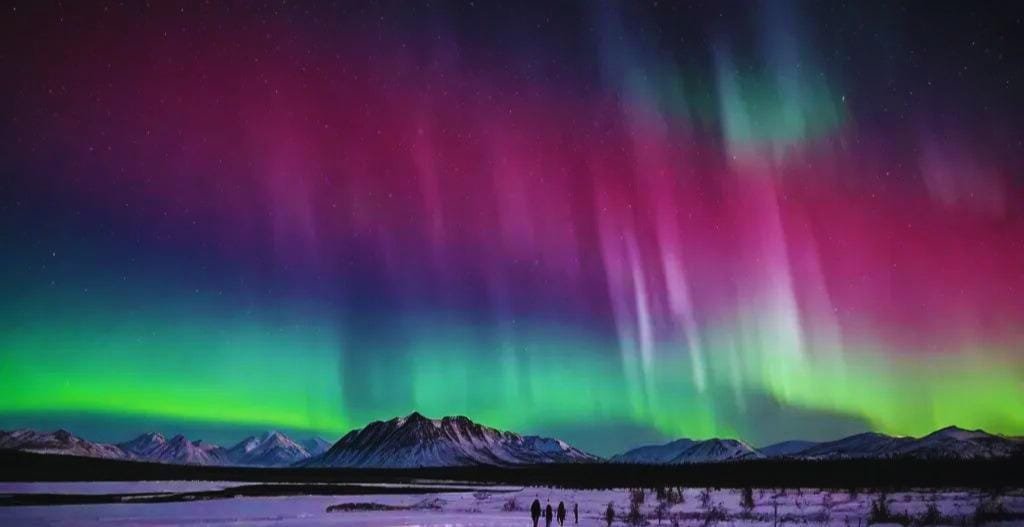
Despite centuries of scientific study, auroras still hold mysteries. One such puzzle is the aurora’s occasional “sounds”—crackling, hissing, or whooshing noises reported by some observers. For years, scientists dismissed these reports, as the aurora occurs far too high in the atmosphere for sound waves to travel directly to ground-level observers. Recent research suggests these sounds might be caused by electrical phenomena much closer to the ground, triggered by the same geomagnetic conditions that create the visible auroras above.
In 2016, Finnish researchers recorded these sounds during auroral displays and found they result from electrical discharges about 70 meters above ground. These discharges occur when geomagnetic storms cause layers of charge to build up in the atmosphere during temperature inversions—situations where cold air near the ground is topped by warmer air, creating stable layers. When these charged layers discharge, they create audible sounds synchronized with auroral activity, explaining centuries of disputed reports.
Another enigma is the exact mechanism behind certain auroral formations, particularly the fast-moving “black auroras”—dark, empty regions that appear to move through or alongside bright auroral displays. These may represent areas where downward-flowing particles are actually being pulled back upward into space, creating a void in the luminous display. Alternatively, they might result from complex wave interactions in the magnetosphere that temporarily inhibit particle precipitation.
Perhaps the most tantalizing mystery involves “STEVE” (Strong Thermal Emission Velocity Enhancement)—a recently discovered atmospheric phenomenon often mistaken for an aurora. First brought to scientific attention by amateur photographers in 2016, STEVE appears as a narrow, purplish arc stretching across the sky, sometimes accompanied by a green “picket fence” structure. Unlike true auroras, STEVE typically appears much closer to the equator and glowFmarss in a narrow band of purple-mauve light.
Research suggests STEVE results from a hot ribbon of gas flowing through the upper atmosphere at speeds exceeding 13,000 mph, with temperatures 5,500°F higher than the surrounding air. While STEVE often occurs during auroral activity, it’s not created by the same direct particle collisions, representing an entirely different atmospheric phenomenon that scientists are still working to fully understand.
Aurora and Technology: Beautiful but Potentially Destructive
While auroras themselves are harmless light shows, the geomagnetic storms that create them can pose serious risks to modern technological infrastructure. When the Carrington Event struck in 1859, technology was limited primarily to telegraph systems. Today, our world depends on satellites, power grids, and global communications networks—all potentially vulnerable to these space weather events.
Geomagnetically induced currents (GICs) during intense storms can flow through power lines, overloading transformers and causing blackouts. The most famous example occurred in March 1989, when a severe geomagnetic storm collapsed the Hydro-Québec power grid in Canada, leaving six million people without electricity for nine hours. Modern grid designs incorporate protective measures, but experts warn that a Carrington-level event today could still cause widespread outages lasting weeks or months in vulnerable regions.
Satellites face even greater risks, as they operate outside Earth’s protective atmosphere. Solar particles can damage sensitive electronics, degrade solar panels, and disrupt communications. During intense storms, satellite operators may need to power down sensitive systems or reorient spacecraft to minimize exposure.
Aviation is another affected sector. During solar storms, flights over polar regions may be rerouted to avoid communication blackouts and increased radiation exposure. GPS accuracy can degrade significantly, affecting everything from commercial aircraft to precision agriculture systems.
These concerns have sparked international collaboration on space weather monitoring and forecasting. In 2015, the White House released the National Space Weather Strategy, outlining steps to prepare for and mitigate the impacts of severe geomagnetic storms. Similar initiatives exist in Europe, Japan, and other technologically advanced regions.
Observing Auroras: Tips for the Aurora Hunter
For those hoping to witness this celestial spectacle firsthand, planning and patience are essential. The ideal aurora-viewing location combines three critical factors: high latitude (typically within or near the auroral oval), dark skies free from light pollution, and clear weather. Popular destinations include Tromsø (Norway), Abisko (Sweden), Rovaniemi (Finland), Reykjavik (Iceland), Yellowknife (Canada), and Fairbanks (Alaska).
Timing matters tremendously. The aurora is technically present day and night, but sunlight makes it invisible during daylight hours. In summer months, extended daylight in high latitudes further limits viewing opportunities. Most aurora tours operate during winter (September to March in the Northern Hemisphere), when nights are longest and often clearest.
The moon’s phase also affects visibility. A full moon can wash out fainter auroral displays, though very active auroras will shine through regardless. New moon periods provide the darkest skies and best contrast.
Modern technology has transformed the aurora-hunting experience. Smartphone apps like “My Aurora Forecast” and “Aurora Alert” provide real-time notifications based on geomagnetic conditions. Websites such as SpaceWeatherLive.com offer detailed metrics, including the Kp index, solar wind speed, and Bz component (a measure of the interplanetary magnetic field’s orientation that strongly influences auroral activity).
For photographers, capturing the aurora requires specialized techniques. Modern digital cameras with high ISO capabilities can record auroral details invisible to the naked eye. Typical settings include: a wide-angle lens (14-24mm) with a large aperture (f/2.8 or wider), ISO 1600-6400, and exposures ranging from 5-15 seconds depending on auroral brightness and movement. A sturdy tripod is essential, and remote shutter releases or timer functions help eliminate camera shake during long exposures.
Climate Change and Auroras: An Unexpected Connection
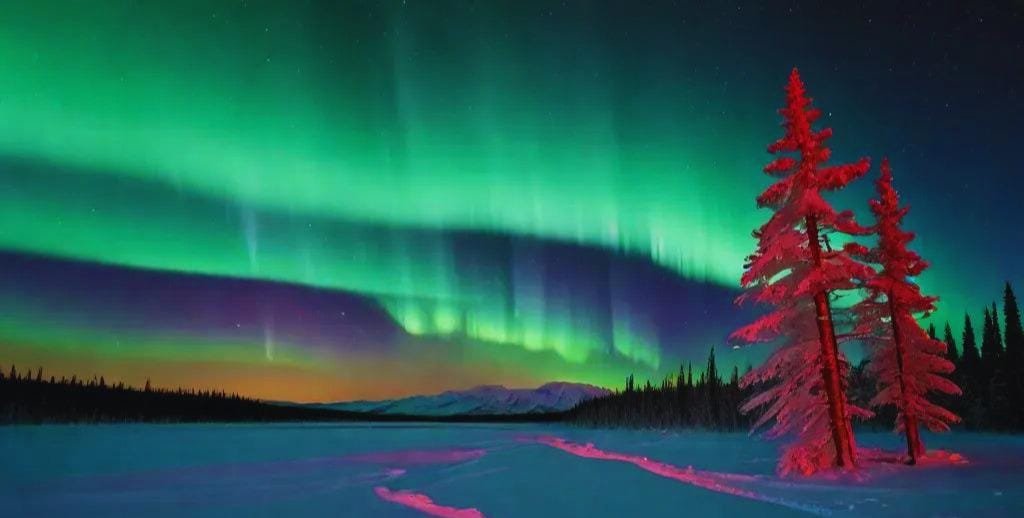
Intriguingly, climate change may indirectly affect auroral displays in coming decades. While global warming primarily impacts the lower atmosphere, the middle and upper atmosphere—where auroras occur—actually cool as greenhouse gases trap heat below. This cooling causes the upper atmosphere to contract, potentially altering how auroras form and appear.
Some research suggests that as the upper atmosphere becomes less dense, charged particles may penetrate deeper before colliding with atmospheric gases. This could shift the altitude of auroral displays and potentially change their characteristic colors and shapes.
Additionally, changes in Earth’s magnetic field—which is weakening overall and showing signs of a potential future reversal—may alter the position and extent of the auroral ovals. The North Magnetic Pole’s accelerating drift toward Siberia has already shifted the average position of the northern auroral oval, affecting which geographic regions have the best viewing opportunities.
Conclusion: Where Science Meets Wonder
The aurora borealis stands as a perfect marriage of hard science and ethereal beauty—a reminder that even our most precise understanding of plasma physics and magnetohydrodynamics cannot diminish the wonder of watching the sky come alive with color and movement. In an age where light pollution has robbed many of the simple pleasure of a star-filled sky, the aurora remains nature’s most spectacular light show, a phenomenon that must be experienced firsthand to be truly appreciated.
More than just a tourist attraction, the aurora serves as a visible reminder of Earth’s place in the larger solar system—a tangible connection to our star and the complex electromagnetic relationships that define our cosmic neighborhood. Each rippling curtain of light represents the culmination of processes beginning in the sun’s core, traversing 93 million miles of interplanetary space, and interacting with our planet’s magnetic shield and atmosphere.
As our sun approaches another solar maximum in the coming years, opportunities to witness this spectacle will increase. For those planning their own aurora adventure, patience and preparation are key—but the reward is an experience that connects us to both cutting-edge science and ancient human wonder in a single, breathtaking moment.
In the words of American astronomer and author Carl Sagan: “Somewhere, something incredible is waiting to be known.” For aurora watchers standing beneath a sky alive with dancing light, that incredible something isn’t waiting at all—it’s unfolding right before their eyes, a cosmic spectacle that bridges the gap between scientific understanding and pure, elemental wonder.
FAQ: Understanding the Aurora Borealis
Q: What causes the different colors in the northern lights?
A: The colors depend on which atmospheric gases are struck by solar particles and at what altitude. Oxygen produces green (the most common color) at about 60-150 miles up, and rare red auroras at higher altitudes (150-300 miles). Nitrogen creates blue or purplish-red hues. When these colors mix, they can create the full spectrum of auroral displays. The specific wavelengths are 557.7 nanometers for green oxygen emissions and 630.0 nanometers for red oxygen emissions, while nitrogen produces various blue and purple wavelengths.
Q: When is the best time to see the northern lights?
A: Winter months (September to March in the Northern Hemisphere) offer longer nights and clearer skies, maximizing viewing opportunities. The best viewing typically occurs around midnight, though auroras can appear anytime during dark hours. Solar maximum periods—occurring approximately every 11 years—increase both frequency and intensity of displays, with the next peak expected in 2025. Clear nights with minimal cloud cover are essential, and new moon periods provide the darkest skies for optimal contrast.
Q: Can auroras damage satellites or power grids?
A: Auroras themselves are harmless light displays, but the geomagnetic storms that cause them can indeed disrupt technology. The charged particles and changing magnetic fields can induce currents in power lines, damage satellite electronics, disrupt GPS signals, and even corrode pipelines. The most severe geomagnetic storm on record—the 1859 Carrington Event—caused telegraph systems to catch fire and operate without being connected to power sources. Modern infrastructure is more vulnerable, with potential impacts on power grids, satellite operations, aviation, and telecommunications systems.
Q: Do the southern lights (aurora australis) look different from the northern lights?
A: The southern lights are essentially the mirror image of their northern counterparts, created by the same processes and displaying identical colors and patterns. The primary difference is practical rather than scientific—the southern lights are harder for most people to observe because the auroral oval in the Southern Hemisphere mostly overlaps Antarctica, with fewer inhabited land masses in prime viewing position compared to the Northern Hemisphere. Places like southern Tasmania, New Zealand’s South Island, and southern Patagonia offer the best viewing opportunities outside Antarctica itself.
Q: Can I photograph the aurora with my smartphone?
A: Modern smartphones can capture basic auroral displays, especially during strong geomagnetic storms, but results are usually disappointing compared to what the human eye sees. For quality aurora photography, a DSLR or mirrorless camera with manual settings is recommended, along with a tripod for the long exposures (typically 5-15 seconds) needed to collect enough light. Wide-angle lenses with large apertures (f/2.8 or wider) will capture more of the sky and work better in low-light conditions. Some newer smartphone models with “night mode” capabilities can produce surprisingly good results when properly stabilized.
Q: What’s the difference between an aurora and STEVE?
A: While often mistaken for an aurora, STEVE (Strong Thermal Emission Velocity Enhancement) is a distinct atmospheric phenomenon. True auroras are caused by charged particles from the sun colliding with atmospheric gases. STEVE, however, results from a hot, fast-moving ribbon of gas flowing through the upper atmosphere. Visually, STEVE appears as a narrow, purplish-mauve arc sometimes accompanied by a green “picket fence” structure, while auroras typically display broader, more dynamic curtains and rays. STEVE also tends to appear at lower latitudes than true auroras and may be visible during geomagnetic conditions too weak to produce conventional auroral displays.
Q: How do scientists predict when auroras will be visible?
A: Forecasting relies on monitoring solar activity and the solar wind using satellites positioned between Earth and the sun. Key indicators include: the Kp index (measuring geomagnetic disturbance on a 0-9 scale), solar wind speed and density, and the Bz component (the north-south orientation of the interplanetary magnetic field). When the Bz turns southward, it connects more efficiently with Earth’s magnetic field, allowing more particles to enter the atmosphere. Short-term forecasts (15-60 minutes) can be quite accurate, while predictions beyond 2-3 days become increasingly uncertain. Numerous websites and smartphone apps provide real-time aurora forecasts based on these parameters.
Q: Can auroras be seen from space?
A: Yes, and they offer a spectacular view from orbit. Astronauts aboard the International Space Station regularly photograph auroras from their vantage point 250 miles above Earth. From space, the aurora appears as a glowing ring around the polar regions—the auroral oval—with dynamic features shifting and pulsing within this ring. Satellites have also captured auroras from higher altitudes, revealing their full extent and relationship to Earth’s magnetosphere. These space-based observations provide valuable scientific data about auroral processes that complement ground-based studies.
Q: Are there auroras on other planets?
A: Yes, auroras have been observed on several planets in our solar system. Jupiter has the most powerful auroras, created by its massive magnetic field and interaction with its volcanic moon Io. Saturn’s auroras pulse with the planet’s rotation period. Even Venus and Mars, despite having weak or no global magnetic fields, experience aurora-like phenomena through different mechanisms. Uranus and Neptune also display auroras, though these are difficult to observe from Earth. Recent observations suggest that some exoplanets (planets orbiting other stars) may also experience auroral displays, potentially more powerful than anything in our solar system.
Q: Can auroras affect human health?
A: Unlike many space weather phenomena, auroras pose no direct health risks to humans on Earth’s surface. The upper atmosphere and magnetosphere absorb the charged particles that create auroras long before they can reach ground level. Even aircraft passengers flying through auroral regions face minimal additional radiation exposure. The geomagnetic storms associated with strong auroras can, however, indirectly affect human activities by disrupting power grids, satellites, and communication systems. Some individuals claim to experience headaches or mood changes during geomagnetic storms, but scientific evidence for direct physiological effects remains inconclusive.
Q: How fast do auroras move?
A: Auroral features can move at remarkably high speeds. Individual ripples within auroral curtains may travel at 1,000-10,000 kilometers per hour (620-6,200 mph). The apparent motion combines several factors: the movement of charged particles along magnetic field lines, wave propagation through the magnetosphere, and rotation of Earth beneath the auroral oval. During intense geomagnetic storms, the entire auroral oval can expand toward the equator at speeds exceeding 100 kilometers per minute, bringing auroral displays to lower latitudes in just hours. The fastest auroral features, called “aureole” or “corona,” can appear to shoot directly overhead like searchlight beams when viewed from directly beneath the auroral oval.
Q: Do auroras make sounds?
A: While the aurora itself occurs too high in the atmosphere to create sounds directly audible on the ground, scientific evidence now confirms that certain geomagnetic conditions can produce crackling, hissing, or swishing sounds synchronized with auroral displays. These sounds result from electrical discharges in the lower atmosphere (about 70-80 meters above ground) during temperature inversions, when layers of differently charged air build up and then discharge. Not all auroral displays produce audible sounds, and they’re most commonly reported during very intense geomagnetic storms in extremely quiet locations. Many indigenous Arctic peoples have traditional knowledge of these aurora-associated sounds, which science has only recently verified.
Q: How do auroras affect wildlife?
A: There’s little scientific evidence that auroras directly affect animal behavior. Most animals that have evolved in Arctic regions have long been exposed to auroral displays and show no particular reaction to them. However, the geomagnetic disturbances associated with auroras might potentially affect animals that use magnetic fields for navigation, such as certain birds, sea turtles, and marine mammals. Research in this area remains limited. Some studies suggest possible correlations between geomagnetic activity and whale strandings or bird migration anomalies, but conclusive evidence linking these directly to auroral activity is lacking.
Q: What was the most spectacular aurora in recorded history?
A: The Carrington Event of September 1-2, 1859, produced the most spectacular and widespread auroral displays in recorded history. Named after British astronomer Richard Carrington, who observed the massive solar flare that triggered it, this geomagnetic storm created auroras visible throughout the Americas, Europe, Asia, and Australia—with reports from locations as close to the equator as Cuba, Jamaica, El Salvador, and Hawaii. The auroras were so bright that people could read newspapers by their light at midnight, and many people woke believing it was dawn. Gold miners in the Rocky Mountains reportedly began preparing breakfast before realizing it was only 1:00 AM. Telegraph systems worldwide failed, with some operators receiving electric shocks and paper catching fire in telegraph offices.

